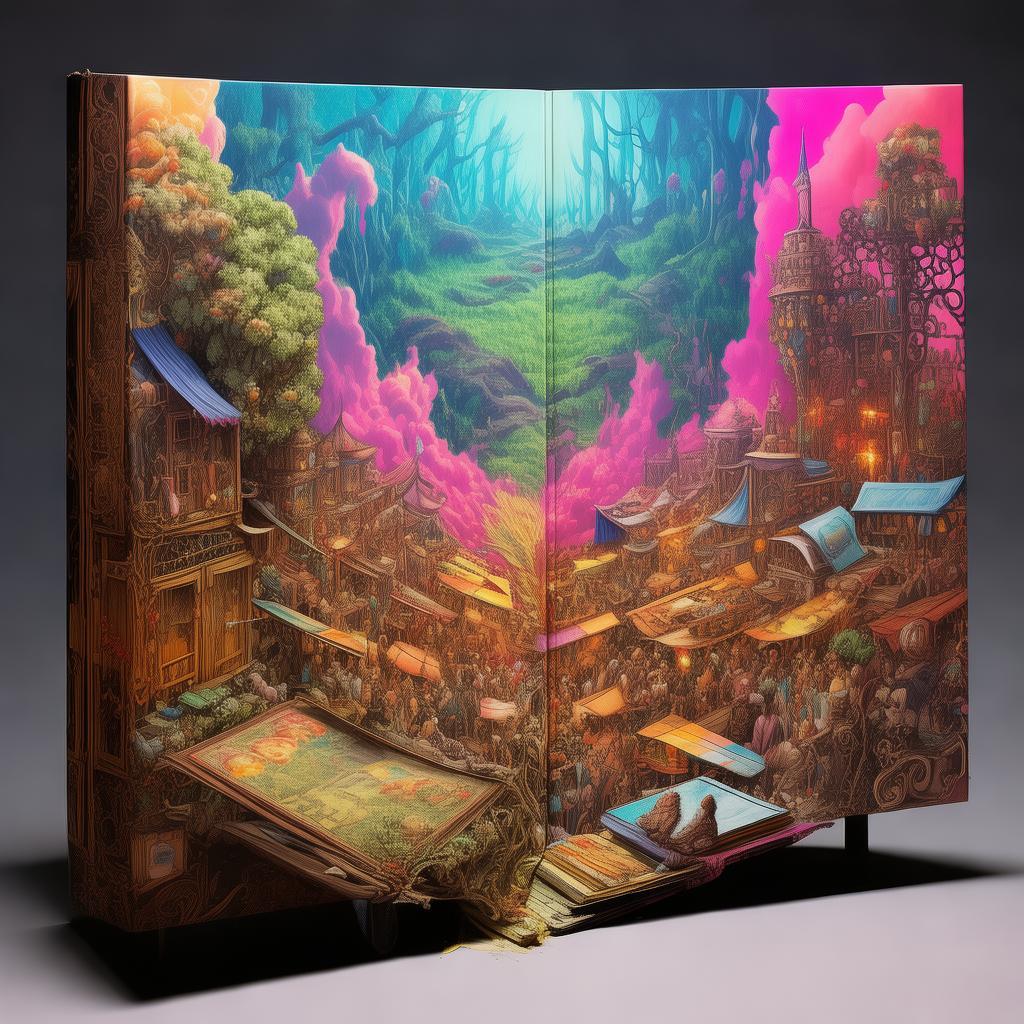Life's Quilt: A Tale of Love and Redemption
The night was heavy with the scent of rain, the kind that seemed to wash away the world's secrets, leaving only the rawness of reality behind. In the small town of Willow Creek, the old, creaky house at the end of Maple Street stood as a silent sentinel, its windows glowing with the soft flicker of candlelight. Inside, beneath the weight of a hundred years of memories, lived a woman named Eliza.
Eliza had grown up with the notion that her family was one of the town's most esteemed. Her grandmother, the matriarch, had spun tales of her ancestors' contributions to the community, their unwavering integrity, and their boundless compassion. Yet, as Eliza approached her thirtieth birthday, she felt an inexplicable void in her life, a sense that something was amiss with her family's history.
The turning point came when Eliza's grandmother passed away, leaving behind a trunk filled with old letters, photographs, and a peculiar, leather-bound journal. The journal, with its worn edges and delicate, faded handwriting, beckoned her to uncover the hidden stories of her ancestors.
The first entry was dated 1876, and it spoke of a woman named Abigail, a woman of strong will and even stronger beliefs. Abigail had been a nurse during the Civil War, and it was in the midst of that chaos that she had made a promise to a young soldier named Thomas. They exchanged vows, not in a church or under the eyes of family, but in a quiet, candlelit room amidst the horror of war.
The story unfolded with each page, revealing a family of liars and keepers of secrets. Eliza learned that her grandmother had been the one to shroud the truth in silence, protecting the family name at any cost. The revelation was shattering. The woman she had revered was a stranger, a person who had lived a life of deception and sacrifice.

As Eliza delved deeper, she discovered that Thomas, the soldier she had read about, was her great-grandfather. The journal spoke of his love for Abigail, of their dreams for a family, and of the heartache that followed when Thomas was killed in battle. In his last letter, he had confessed his love for her, a love that had transcended time and space.
With each revelation, Eliza felt a strange connection to her ancestors, a connection that felt more real than any blood relation. She realized that the void she had felt was the absence of Thomas's love, a love that had been hidden away for generations.
Determined to right the wrongs of the past, Eliza embarked on a journey to find her great-grandfather's resting place. She traveled to the battlefield where he had fallen, a place that had been a source of pain for her family for over a century. There, she placed a small, handmade quilt at his grave, a quilt that represented the love and loss that had shaped her family's legacy.
Returning to Willow Creek, Eliza found herself at odds with her grandmother's legacy. She knew that revealing the truth would tarnish the family name, but she also understood that the truth was the only way to heal the wounds of the past. With courage and love, she confronted her aunts and uncles, sharing the story of her ancestors and asking for forgiveness.
The reaction was mixed. Some were appalled by the revelation, while others saw it as an opportunity for redemption. Eliza's aunts and uncles, who had grown up with the same lies, were moved by her story. They acknowledged their part in the deception and vowed to change the narrative for future generations.
In the end, Eliza's journey led her to a place of peace and understanding. She realized that love and forgiveness were the truest forms of redemption, and that the quilt, which had once been a symbol of silence and deception, was now a tapestry of her family's shared life, a quilt that held the warmth of love and the strength of forgiveness.
The story of Eliza and her ancestors spread through Willow Creek like wildfire, a tale of love, redemption, and the power of truth. The quilt, once a secret, became a symbol of unity and healing, a testament to the resilience of the human spirit.
As the days passed, Eliza found herself at the center of a community that had been changed by her courage. The quilt, now a part of the town's history, was displayed in the local museum, a reminder of the past and a beacon of hope for the future.
In the end, Eliza's journey was not just about uncovering her family's secrets; it was about embracing the complexities of love and the strength it takes to forgive. It was a story that would be told for generations, a story that would continue to weave together the lives of those who came after her, a story that was as much about the past as it was about the future.
? The ending left readers reflecting on the power of truth, the importance of forgiveness, and the enduring legacy of love. ?
✨ Original Statement ✨
All articles published on this website (including but not limited to text, images, videos, and other content) are original or authorized for reposting and are protected by relevant laws. Without the explicit written permission of this website, no individual or organization may copy, modify, repost, or use the content for commercial purposes.
If you need to quote or cooperate, please contact this site for authorization. We reserve the right to pursue legal responsibility for any unauthorized use.
Hereby declared.









